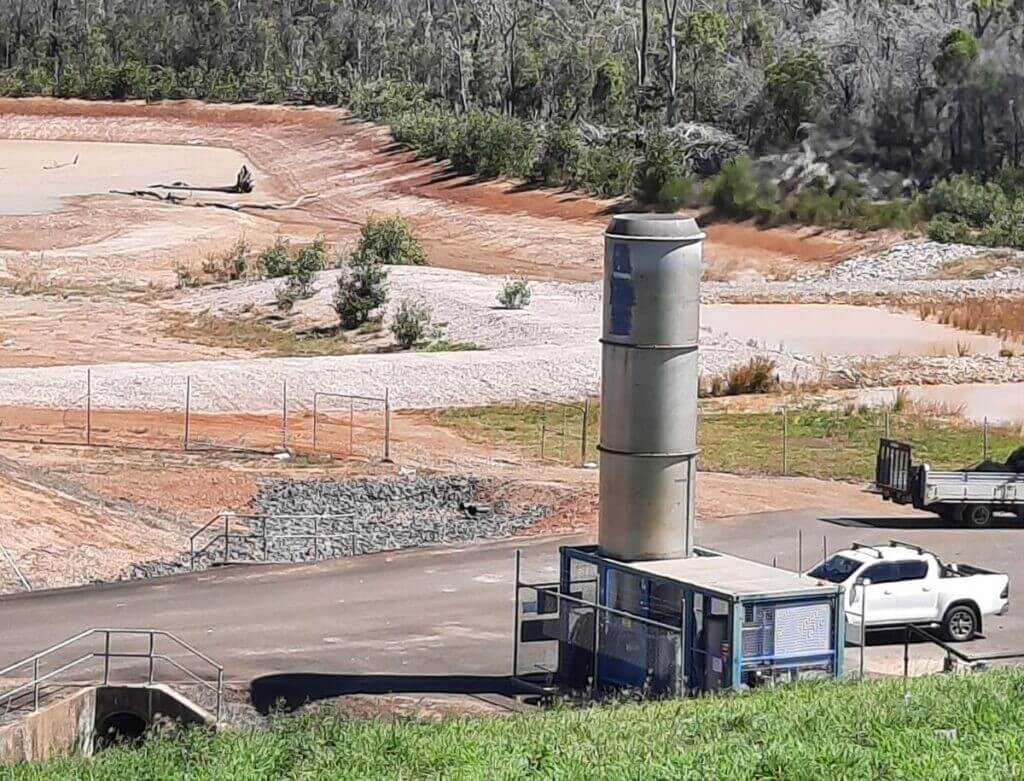
Digging Deeper: Managing the Risk of Different Site Conditions Claims
This article forms part of our Construction Claims Article Series, which to date has explored change and variation claims, price acceleration claims, and delay, disruption and prolongation claims. This week, in collaboration with Anvelo, we examine different site conditions claims, with a focus on latent conditions, being unexpected or concealed risks that, if not properly addressed in the construction contract, can derail a construction project. We consider the associated risks, risk allocation strategies, and key contractual mechanisms for managing claims related to different site conditions. Next week’s article will explore progress claims, with the final instalment of the series covering damages claims.
What are latent conditions?
In the construction industry, it is not uncommon for projects to encounter obstacles that delay progress, increase costs, and even lead to disputes. One such obstacle occurs when ‘different site conditions’ or ‘latent conditions’ are identified during construction. These conditions are typically defined as unforeseen site conditions that could not be discovered during standard site inspections, by obtaining necessary professional and technical advice, or by undertaking a careful analysis of the available site plans and project documentation. ‘Different site conditions’ or ‘latent conditions’ differ from the site conditions which could reasonably have been anticipated during the contract negotiation phase, and their discovery during construction can pose significant risks to the construction program, cost, and the project as a whole.
Common examples of latent conditions include:
- subsurface conditions, such as unexpected rock formations, water tables, or soft soil conditions;
- soil contamination
- asbestos;
- uncharted underground infrastructure, such as mine shafts; and
- uncharted underground services, such as plumbing systems, utility lines, or even historical remnants.
Who bears the risk?
One of the most frequently contested positions in contract negotiations involving latent conditions is the allocation of cost and delay risk – specifically:
- whether the risk associated with latent conditions is to be fully absorbed by the contractor;
- whether a risk-sharing option will be employed, such as a contingency fund;
- whether the contractor is entitled to a reimbursement of any additional costs incurred, for example by way of a variation claim;
- whether the contractor is entitled to an extension of time to the project completion date; or
- both (c) and (d) above.
Traditionally, the risks associated with latent conditions were borne by the principal, with the rationale being that the principal had a greater knowledge of the site and was better placed to identify and manage potential risks. However, it is becoming increasingly common for construction contracts to shift this risk to the contractor, reflecting the greater reliance placed on the contractor’s technical expertise. In saying that, commercial considerations may warrant the principal retaining some risk, including:
- to attract qualified and experienced contractors to submit a bid and enter a contract who may otherwise avoid high-risk tenders. Experienced, sought-after contractors may be deterred from tendering where the perceived risk is too high, often due to inadequate site condition information or an unfavourable risk allocation; and/or
- to reduce contingency time and cost allowances by limiting the contractor’s need to ‘price in’ unknown risks.
Ultimately, the allocation of cost and delay risk is a commercial decision to be negotiated between the parties and drafted into the construction contract. Regardless of the agreed position, it is advisable to:
- require the principal to provide the contractor with all available site data, such as plans, existing reports or historical information about the site;
- consider providing the contractor with the opportunity to inspect the site and carry out an investigation of the site; and
- specify in the contract whether the contractor is entitled to rely on the accuracy of such information provided by the principal.
Why are latent conditions clauses important?
Given the potential impact of latent conditions on project timelines and cost, it is critical that construction contracts include well-drafted latent conditions clauses. These clauses must set out the respective rights and obligations of the principal and the contractor in the event that latent conditions are encountered, and include an appropriate definition of ‘latent conditions’. Principals must ensure the latent conditions clause is carefully drafted to protect their commercial interests, whilst contractors must fully understand the implications of different site conditions and how the contract allocates the associated time and cost risks.
When drafting or reviewing a latent conditions clause, the following elements should be considered:
1: Definition of latent condition
The first step in drafting or reviewing a latent conditions clause is to consider what constitutes a latent condition. The definition should be sufficiently broad to protect the contractor but not so broad that the principal feels unfairly burdened with the time and cost risks. To balance the interests of the parties, the definition of ‘latent conditions’ typically imports a reasonableness standard. For example, latent conditions may be defined in the contract as:
‘site conditions which differ materially from the site conditions which should reasonably have been anticipated by the Contractor at the Contract date had the Contractor:
- examined all Project Information;
- inspected the Site and its surroundings; and
- carried out all investigations and obtained all professional and technical advice in relation to the site conditions as would be expected of a reasonable contractor in the position of the Contractor seeking to satisfy itself of the site conditions, given the nature of the works/services/supply and the risks associated with the Contract; and
any other conditions which the Contract specifies identifies as Latent Conditions.
2: Allocation of risk
As discussed above, the allocation of risk is a fundamental consideration when drafting a latent conditions clause. The clause should set out whether the contractor is entitled to:
- an extension of time;
- reimbursement of additional costs; or
- both, and under what conditions.
If the contract defines latent conditions as unforeseeable or unanticipated, it is generally reasonable for the contractor to claim an extension of time for the additional work required to address the condition.
3: Procedure for notification and claims
Where it is agreed that the contractor will be entitled to extensions of time or reimbursement of costs associated with latent conditions, the latent conditions clause must clearly articulate the procedure for making such claims. The clause should set out a detailed, step-by-step process for:
- notifying the other party promptly upon discovery of the latent condition;
- documenting the latent condition, including any evidence the contractor must provide to substantiate the claim (photographs, geotechnical reports, site reports, test results etc);
- investigating and assessing the latent condition; and
- determining any entitlement to relief.
Importantly, this mechanism must integrate seamlessly with the broader contractual framework, particularly the provisions governing variations, force majeure events, and indemnities.
4: Reliance on principal-provided data
Where the principal provides site information, such as geotechnical reports, surveys, or environmental data, it is important for the contract to address:
- whether such data is provided for information only; and
- the extent to which the contractor may rely on the accuracy and completeness of the data provided, or is expected to verify it.
Balancing this issue requires careful consideration. From the principal’s perspective, disclaiming responsibility for the accuracy of site information provided may reduce their exposure to claims, but doing so can create uncertainty and drive up pricing as contractors factor that risk into their bids. Conversely, placing full reliance on the principal’s data without requiring the contractor to exercise any independent judgment may expose the principal to significant liability if the data proves to be incomplete or inaccurate.
Tips for contractors: managing latent conditions
Contractors should adopt a proactive and commercially informed approach to managing the risks associated with latent conditions:
- Due diligence: conduct a comprehensive site inspection, document the identified conditions and critically review all available site information prior to entering a contract. Proper due diligence reduces the risk of claims related to conditions that should have been anticipated.
- Notification: upon discovering a latent condition, promptly notify the principal in accordance with the contractual notification requirements. Failure to do so may affect entitlement to relief.
- Records: keep detailed records of any additional costs and time incurred in addressing the latent condition. This should include separate accounting of all costs related to the latent condition, updated programs that track the impact of the delay, and evidence of the condition (such as photographs, test results or consultant reports).
- Experts: where subsurface or environmental conditions are unclear, engage suitably qualified consultants (e.g. geotechnical or environmental engineers) to assess the condition and provide expert advice.
- Reliance on site information: confirm the status of any provided data – factual, indicative, or for information only.
Tips for principals: managing latent conditions
- Contract: Include a clear and fair latent conditions clause that sets out the parties’ respective rights, obligations and entitlements in the event that differing site conditions are encountered.
- Definitions and procedures: incorporate clear definitions and a structured procedure for dealing with latent conditions. This will reduce ambiguity and streamline the claims and assessment process.
- Respond to contractor claims: respond promptly to contractor claims. Timely assessment of claims reduces project disruption and promotes resolution before issues escalate.
- Cooperative approach: adopt a cooperative approach to resolving latent condition issues, recognising that early engagement and open dialogue can lead to more efficient and commercially sound outcomes.
- Carefully review claims: assess contractor claims against the contractual framework to ensure that the conditions were genuinely unforeseeable, and that any notification and evidentiary requirements have been met.
- Supporting data: supply geotechnical, environmental, and historical site information where available to reduce uncertainty and support effective risk assessment by tenderers.
- Blanket disclaimers: do not rely on broad disclaimers unless the contractor has been given a fair opportunity to price the associated risks into their tender.
- Reliance on site information: clarify whether reliance on principal-provided site information is permitted.
How we can help
The discovery of latent conditions is an inherent risk in construction projects – particularly in Queensland, where environmental and geological conditions vary widely. However, with proactive planning, thorough investigation, and carefully drafted contractual provisions, the parties can prevent disputes and deliver successful outcomes. At Muscat Tanzer, we support both principals and contractors in the construction industry to manage and resolve different site conditions claims. Whether you require assistance with contract drafting, claims assessment, or dispute resolution, our experienced team is here to help you navigate these complex issues with confidence.

Paul Muscat
Director
Muscat Tanzer

India Bennett
Associate
Muscat Tanzer

Seán McNally
Director - Quantum Expert
Anvelo








